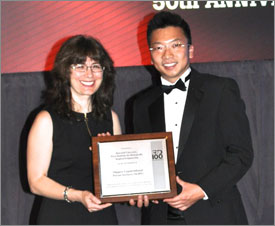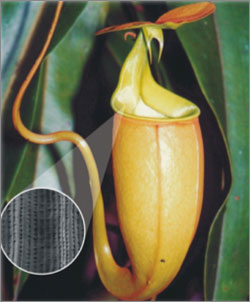
SLIPS — a novel material that repels just about any liquid or solid — was officially recognized at the R&D 100 Awards Banquet in Orlando on November 1 for winning an R&D 100 Award from R&D Magazine. The R&D 100 Awards, called the “Oscars of Innovation,” recognize and celebrate the top 100 technology products of the year.
Winners of the R&D 100 Awards were selected by an independent judging panel and by the editors of R&D Magazine, which covers cutting-edge technologies and innovations for research scientists, engineers, and technical experts around the world.
SLIPS (Slippery Liquid-Infused Porous Surfaces) was developed by a team of scientists from the Wyss Institute for Biologically Inspired Engineering at Harvard University and Harvard’s School of Engineering and Applied Sciences (SEAS). Joanna Aizenberg, a Wyss Core Faculty Member and the Amy Smith Berylson Professor of Materials Science at SEAS, is leading the research effort with support from Wyss Postdoctoral Fellow Tak-Sing Wong.

SLIPS was inspired by the carnivorous pitcher plant, whose super-slippery surface enables it to capture insects. The technology was first described in the September 22, 2011 issue of the journal Nature, and its potential applications are many and varied; the most immediate include refrigeration, preventing biofilms from forming on medical devices, and a host of everyday household applications.
Since their inception in 1963, the R&D 100 awards have identified many technologies that eventually became household names, such as the fax machine (1975), the Nicoderm anti-smoking patch (1992), HDTV (1998), and a 3-D geophysical imaging technology that researchers hope will improve the hunt for energy sources (2009).